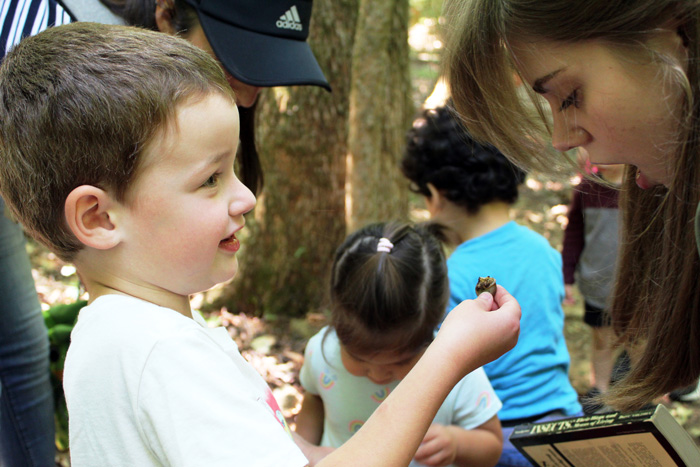Getting kids outdoors and engaging with nature has always been important for their physical and mental well-being. But nowadays—as climate experts continue to sound the alarm about the importance of protecting and restoring our natural spaces—it seems even more critical for young people to learn about and immerse themselves in the ecosystems they inhabit, as they’ll become environmental stewards of these spaces.
Environmental education centers are helping the cause. “Nature centers are important because they provide a safe and welcoming introduction to the natural world,” said Renee Oakley, facility manager at the Red Oak Nature Center in North Aurora, Ill. She explained that these centers serve as educational hubs that inspire curiosity, helping visitors feel comfortable exploring and learning about nature. “By fostering a deeper connection to the environment, nature centers encourage healthier lifestyles, stronger communities, and a greater appreciation for natural resources.”
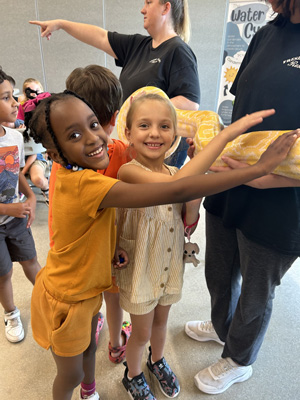
The Fox Valley Park District operates Red Oak, which is located on the Fox River, surrounded by more than 40 acres of woods and wildlife habitat. Indoor space includes classrooms and various hands-on and immersive educational experiences, according to Oakley. “Our Sense the Seasons exhibit helps guests explore how their senses interact with nature throughout different times of the year. We also have an Augmented Reality Sandbox where visitors can shape and manipulate sand landscapes in real time.”
The Wildlife Room—a setting for turtles, frogs, snakes, and more—offers “an up-close look at some of the fascinating creatures that call our region home,” said Oakley. “Everything in our center is designed to spark curiosity and prepare visitors for deeper connections with nature outdoors.”
School field trips to the center are very popular, according to Oakley, encompassing many districts outside their community as well as the homeschool sector. Visits include educational time indoors and outdoors, “within the seven-plus natural habitats that are on our grounds,” including the only cave in the Chicagoland area.
“We have some students who have never—or rarely—spent time in nature,” continued Oakley. “Studies have shown that nature improves well-being, so we definitely want them to be comfortable in it so that each child can benefit from that.”
And while they introduce nature to some, she explained that some kids are already knowledgeable and curious about nature. “The opportunity on our field trips for those students to connect physically with what they’ve only previously learned about in a classroom or on a screen are the moments that we as environmental educators get some of our biggest smiles from.”
The center also offers rentable program bins with lesson plans for educators or homeschoolers, and Oakley said they take programming into school classrooms as well. “We usually work with teachers or the district curriculum coordinator to make sure that all programming we provide aligns with the school’s learning standards. We offer suggestions of topics or activities that meet those standards and make sure that we facilitate inquiry-based programming so that students are engaged.”
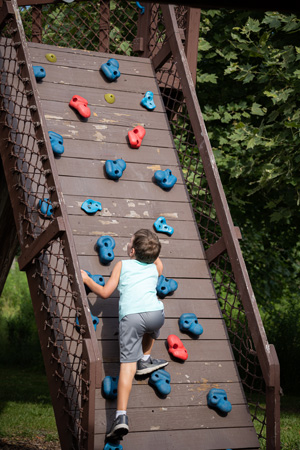
Additionally, a nature preschool program runs out of the center, with students striving to get outside every day, weather and safety permitting, according to Oakley. “Those preschoolers become some of the most resilient and confident preschoolers as they develop in this program. Being outside, they learn to observe and see changes in the seasons that help them adjust to changes within their own experiences.” She said that time spent in nature teaches them that they’re part of a larger community, which provides a sense of belonging, allowing them to “not only get fresh air but be open to learning fresh ideas, which feeds their confidence in themselves.”
Special events are also offered at the center, and Oakley said these include events to highlight each season. In January there are winter activities at Frosty Fest. Maple Fest happens “in our woods during early March, when it’s the only time of year sap is just right for tapping.” Summer brings the Lightning Bug Glow Party, highlighting “this charismatic bioluminescent insect,” while fall brings the Bigfoot Trail Run 5K, where “nature and athletics intersect.”
In Jacksonville, N.C., located on the New River and Wilson Bay, the nonprofit Sturgeon City Environmental Education Center operates out of the city’s former wastewater treatment plant site, which is leased from the city. Three buildings house classrooms, a learning center, supply rooms, and office space. Additional site features include outdoor areas, boardwalks, and a city park. The structures used for treating wastewater still stand as well, and Jamie McIntire, program and event manager at the center, said they “give tours about how it worked and what problems led to Wilson Bay being polluted.”
After the plant was decommissioned, she explained, the city and volunteers placed oysters in the bay and aerators to start the process of decreasing the pollution and eventually removing it, which was successful. “One of the stations that’s offered in our field trips is a wetland walk, where the students walk along the boardwalks and learn about the history of Sturgeon City and how the city and community came together to clean up Wilson Bay.”
The center has a mission to “champion environmental and Science, Technology, Engineering, Art and Mathematics (STEAM) education.” Indoor educational displays include rocks and geodes, which can be examined with microscopes and magnifying glasses, “seeing which minerals glow under a UV light and identifying different rocks and minerals,” said McIntire.
There are fossil tables and an X-ray table where kids can match animal X-rays with pictures. “We have a table that a local beekeeper helped us create to learn about honeybees and their importance,” including a hive smoker and honeycomb. A coastal room features a lit display of coastal sea level rise and specimens including shark jaws, horseshoe crab shells, conches, whelks, and more.
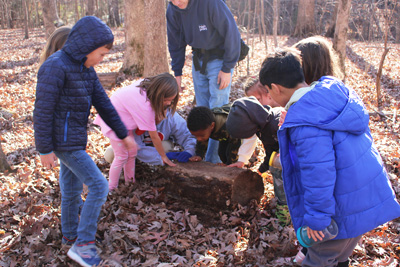
In addition to various classes and programs for all ages, Sturgeon City offers a variety of field trip options. McIntire said these are the biggest portion of their programming, happening almost daily and hosting students and homeschool co-ops from several surrounding counties. Visiting students will typically rotate through different stations for 30 minutes each. “We have stations for educators to choose from when they visit, but we also create stations for customized lessons.”
McIntire mentioned an upcoming visit by a first-grade group, who requested stations on space and the moon to reinforce their current lessons. “We created four stations for the children to rotate through: rockets, the moon, STEM space challenges, and a planetarium show.”
The center also offers public events, designed to educate and engage the community in environmental awareness and conservation efforts with fun and interactive opportunities to learn about the local ecosystem. Past events have included a Celebrating Black Scientists event, a Lego Tournament, and holiday events for Halloween, Christmas, and Earth Day. “Our most popular event is Family Bingo,” said McIntire. “We have upward of 350-plus that attend, and we love that we have the whole family included.” Prizes are offered for kids and adults, and she said it’s their biggest fundraiser each year.
NightLab, where science meets socializing, is designed for adults 21 and older. “We’re so excited for the addition of adult events,” said McIntire. “Our last event called Detectives and Drinks had about 200 attendees. We’re excited to partner with a few local breweries and distilleries to come out and have tables set up with tastings, and teach about how to brew and the science behind it,” along with other hands-on activities.
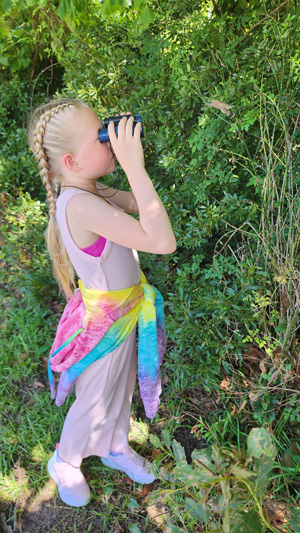
Heading inland, about 200 miles northwest of Sturgeon City, in High Point, N.C., is the Piedmont Environmental Center (PEC), a facility within the High Point Parks and Recreation Department. The center consists of 400 acres of protected forest with eight miles of hiking trails. The High Point Greenway and Bicentennial Greenway also begin at PEC, travelling in different directions.
The center built a large, outdoor, walk-on topographical relief map of much of the Southeast, according to Park Supervisor Dick Thomas, featuring mountains, rivers, sandhills, Carolina bays, and many other geographic and geological forms in relief. “We teach several classes on the mapscape, and visitors are encouraged to walk on it to learn the lessons it provides.”
Thomas said there is also a native garden, and inside the visitor’s center, which was built with recycled building materials, are eight native reptile enclosures used as teaching exhibits.
Activities at the center are offered to schoolchildren from pre-K through high school, according to Thomas, with classes corresponding to the state curriculum. “These are more than interpretive walks and teach science concepts through data collection and other interactions with natural resources. These 16 classes are structured to ensure an outdoor-based learning experience,” though some classes have indoor components too. PEC also partners with local universities to provide field experiences for older students.
Beyond school programming there are traditional interpretive walks, nature camps, workshops, eco-tours, and other nature-based activities and learning experiences, according to Thomas, and most have waiting lists. “This is in part due to years of fine-tuning our programming and in some part due to post-COVID. We’ve noticed a sizable uptick in use, both trail usage and programs, since COVID.”
About a 30-minute drive west of Portland, Ore., is the nonprofit EdenAcres Environmental Education Center, with their Forest Campus located in Hillsboro, Ore. The center has a mission of “empowering learners of all ages to become agents for change through experiential and environmental education.”
And while the center’s programs are primarily outdoors, indoor spaces are available when needed. “At our Forest Campus, we have covered pavilion-style classrooms and a large canvas tent with a woodstove, creating cozy learning spaces while maintaining a strong connection to nature,” said Fallon Harris, executive director and experiential educator at EdenAcres. “At our farm campus we have a charming garden cottage classroom and a greenhouse that supports hands-on activities like plant propagation and seasonal projects.”
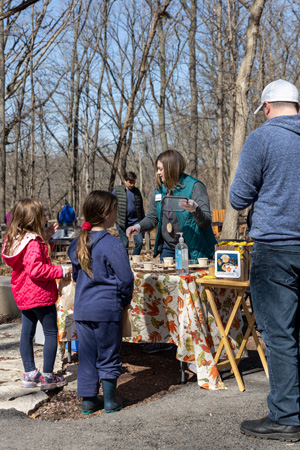
Their nature preschool is in high demand, often with waitlists, according to Harris. “Families are drawn to the program because it nurtures the whole child through play, exploration, and hands-on engagement with nature. Parents appreciate the small group size, the experienced early childhood educators, and the gentle, child-centered approach that helps little ones develop confidence, resilience, and curiosity in an outdoor setting.”
They also offer a preschool in a Portland park, and while they don’t have a formal agreement with Portland Parks & Rec, they operate with the proper permits, and “deeply respect the land and its ecosystems,” said Harris. “This is a fully outdoor program, so while there is no dedicated indoor space, we use shelters and natural features to create cozy, protected learning areas when needed. Rain or shine, we embrace the elements!”
Back at the Forest Campus, Harris said that the majority of students in programs for ages 5 and older are homeschoolers or part of alternative education models. “Many families are drawn to our nature-based approach because it complements self-directed, experiential learning. That said, we also have families who attend traditional school and join us for specific days or seasonal sessions to enrich their children’s education.”
EdenAcres’ Farm School program blends nature-based learning with hands-on agricultural experiences, explained Harris, with students learning about food systems, sustainable farming practices, animal husbandry and how to care for the land in a regenerative way. “They help tend the gardens, care for livestock and explore the interconnectedness of plants, animals, and people. It’s a wonderful program for fostering environmental stewardship through a farm-to-table lens.”
Field trips and outdoor education days involving local schools are also common. “Many of our school partners serve students who have limited access to green spaces, so we work hard to make these opportunities accessible and meaningful,” said Harris. “Our field trips cover topics such as native plants, watershed health, wildlife tracking, and regenerative agriculture, and they’re designed to align with school curriculum standards.”
Equity and inclusion are also central to the center’s mission, according to Harris, and they use a Choose-Your-Tuition model to reduce financial barriers for participation, ensuring that “high quality, nature-based education is accessible to all families.”
They also partner with organizations that serve historically marginalized communities to bring environmental education to at-risk youth and underserved students. “We also focus on engaging neurodivergent learners by offering a neuro-affirming, child-centered approach that meets diverse learning needs.”
The center also operates a community space for all ages, the Blooming B-Street Learning Commons, hosting workshops, seasonal celebrations and more. “While many programs are geared toward kids and families, we also offer educational opportunities for adults, such as gardening workshops, restoration training, and skill-share events,” said Harris.
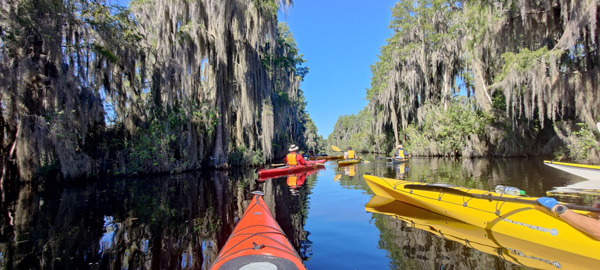
Not surprisingly, Harris said their summer camps—day camps for different age groups—are the most popular offerings, with families coming from all over their region. “Many campers have limited opportunities to explore nature, so these immersive experiences can be transformative. We’ve had kids who start the week hesitant to get their hands dirty, and by the end they’re climbing trees, tracking animals, and making woodland forts!”
In fact, all our contributors said their camps are very popular. In Illinois, Oakley said they host two types of camps in summer at Red Oak. “Our Blast Camp is designed for 6- to 12-year-olds who want that classic, all-day-outside camp experience packed with arts, games, and exploration. At the Nature Center we host a dedicated Nature Camp with different topics and themes each week for ages 2 to 13.”
At Sturgeon City, McIntire said their popular summer camps also feature different themes each week. “We try to focus on what the campers will love, and we can normally incorporate a lot of science in between what we call brain breaks. (These) are important to incorporate play time and free time because it is summer break after all!”
Thomas said their summer and winter nature camps routinely have waitlists. He described their Advanced Nature Camp as a “five-day overnight camp for the serious 12-to-15-year-old interested in nature and environmental education,” which rotates between the North Carolina mountains, sandhills, and outer banks over a three-year period. And adult programming consists of trips either involving kayaks or land-based, which “teach ecology lessons while enjoying adult fun and recreation.”
Many nature centers also offer their spaces for private events to help raise funds. “We typically rent out spaces for birthday parties and personal social events,” said Oakley. “At the Wilds (their adjacent three-season sister shelter) we host large rentals such as weddings, anniversaries, and family reunions.”
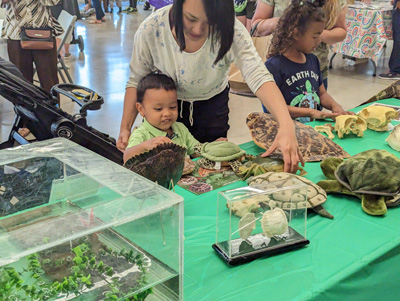
McIntire said rentals are a crucial part of generating extra revenue, “to offset the operating costs of running our building.” There are weddings, parties, conferences, meetings, and more, and weekends are booked up well in advance. “We offer kids’ birthday parties as part of our programming where we teach activities for 90 minutes and then have the birthday celebration for 90 minutes.”
Thomas discussed how previous generations spent far more time outdoors—particularly as children—playing in the woods, exploring creeks, catching insects, and “learning about nature and self.” And he pointed out how forested landscapes and nature in general are shrinking, and information technology, screen time, and various indoor pursuits have replaced outdoor time. “Environmental education centers and parks with hiking trails and greenways help restore nature in our lives.”
Fallon said their programs are designed to cultivate a deep connection with nature, “fostering ecological literacy through direct experience. We believe that when kids understand and love the natural world, they’re more likely to become responsible stewards of the land.”
Added Oakley, “When people feel connected to nature, they’re more likely to care for it—an essential step in ensuring the well-being of our planet and future generations.” RM



